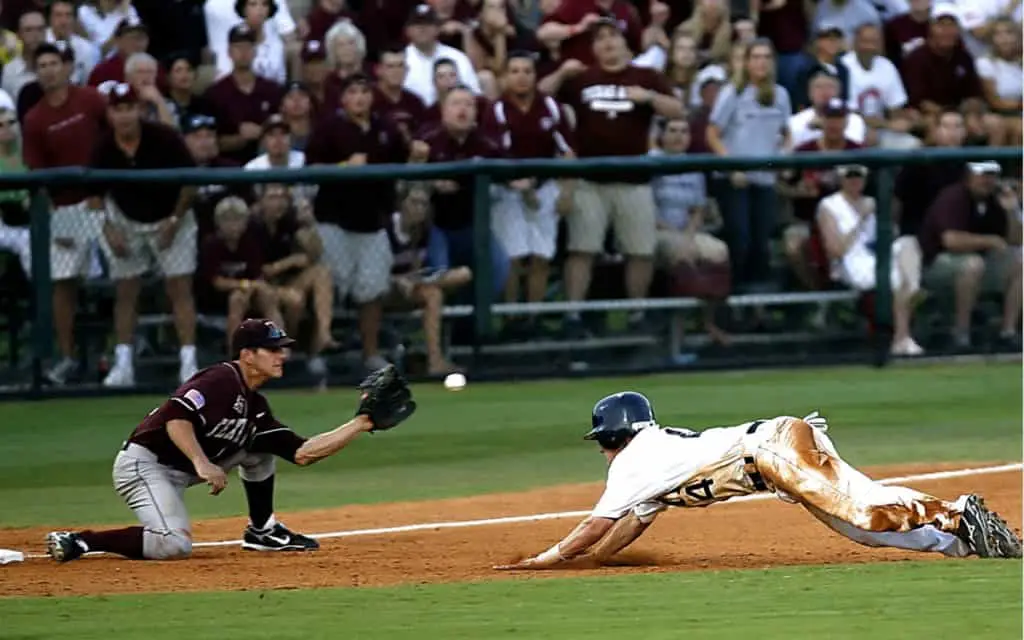One of the great things about baseball is that it takes a variety of skills, sizes and overall strengths to make up a team and place players in the proper position.
The game is set up in that some positions are suited for the player with the strong arm and quality size, while others are better suited for the player with plenty of range with a quick release.
If you look at some of the greatest 1st Basemen of all time, they look completely different than the greatest shortstops or center fielders of all time, but may somewhat resemble the greatest 3rd basemen of all time.
Why is that? Because the game takes different sizes and skills to maximize the defensive positions in the game of baseball.
How to decide baseball positions?
The coach will want to complete a full assessment of each player on the team. Factors or skill levels to take into account:
- Size
- Arm Strength
- Ground ball field ability
- Fly ball catching ability
- Range
- Speed
- Awareness
- Overall strengths
- Overall weaknesses
Once a coach is able to assess and rate each player on a scale of 1 thru 5 (1 being weak, 5 being strong) and compare to other players on the team, they can place players in a position that is best for the team.
Why are left handed pitchers better?

Factors to consider when deciding baseball positions
Other areas that a coach will want to consider when placing players in certain positions include the following:
- Place your fielder with the best range, best fielding ability and a strong arm at shortstop.
- Place your fielder with the most speed, decent arm, and awareness in center field.
- Place a sure handed, decent sized player with limited range at first base.
- Place a quality ground ball fielder, with decent range that might lack some arm strength and 2nd base.
- Take your player who can throw the most strikes and locate pitches at pitcher.
- Place a tough minded, physically touch player with a desire to whatever it takes at catcher.
- The remaining positions can be filled in with others remaining.
What is the main role of the shortstop?
The items above are why it is important to do a complete assessment and figure out where players rank in each of the items above. Another way to measure players is by the 5 tools in baseball.
What are the 5 tools in baseball – plus drills to get better!
What are the most important positions?
First, you need someone to throw strikes. Second, you need someone to play a solid catcher position. Third, you need strong defense up the middle (shortstop, 2nd base and centerfield). For a complete review and breakdown, check out our post linked below.
Baseball positions in order of importance (Rankings)
Ultimately, the coach has to balance out the strengths and weaknesses of the 10-11 players on the team and do what is best for the team and each individual to experience success.
Oftentimes, positions like 1st base, 3rd base, and left and right field are used to place the more powerful hitter that might lack some speed and overall range at these corner positions. The power hitters typically are taller and stronger players that might be best suited for these corner positions in both the outfield and the infield.
Little League and Positions: How To Decide Baseball Positions
The younger the players are, the more rotations on where athletes are playing should be put into place. Players coming up through the youth levels of baseball should learn to play 2-3 positions. Specialization at a certain positions is not highly recommended.
Some areas where this might occur is at the shortstop or catcher positions. However, most catchers can play one of the corner infielders and most shortstops could play 2nd base or outfield.
How to be a good pitcher in baseball (7 Tips)
This will also impact how a coach designs practices. I believe all youth age levels every player should take ground balls and every play should take fly balls, regardless of primary positions. The full development of a player is best for the team and the player in the long run. As coaches, we need to get the big picture in mind and not get caught in the moment.
7 Fun Baseball Drills for 10 Year Olds
7 Fun Baseball Drills for 8 Year Olds
Making sure that a coach has quality drills to fully develop the complete player is important. Whether it is contact hitting or power hitting, playing infield or outfield, running bases or stealing bases, there are many skills needed to be an overall quality ball player that has as many of the 5 tools as possible.
As a player reaches the high school level, being able to play multiple positions makes them much more valuable to the team with the numerous pitching changes that often occur through a game and a season.

How Does an Individual Decide on a Baseball Position?
Train and practice the different skills required to play a variety of positions. Once again, you want to be a versatile player that can step into many positions to help your team reach the full potential in a season. Playing many positions makes your valuable to your team and the coach and can help you stay in the lineup. As someone to give you honest feedback on your variety of skills and continue to train your strengths and weaknesses!
What is the hardest position in baseball?
We want all of our infielders to be able to play every position in the infield and our outfielders to have comfort at each spot in the outfield. Try to get as many repetitions as possible and work on areas where you need work.
Don’t forget to enjoy the journey and the training and be open to feedback!
Final Thoughts!
As a coach, keep the game fun and competitive. Train players in many different positions and help them become a complete player. Players, even at the major league level, often play different positions throughout a season! Getting your players to develop, have fun and take their talents to the next level can be some key goals for any coach.
Related Post
